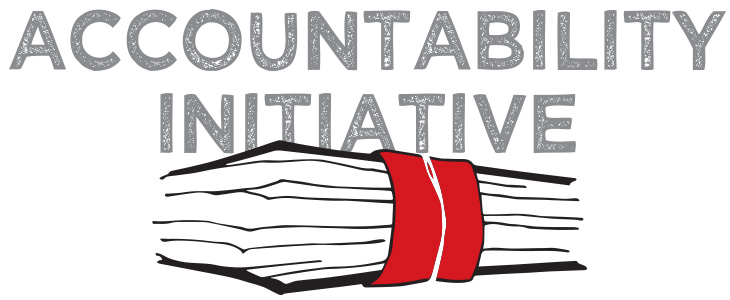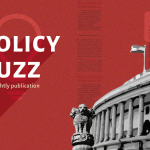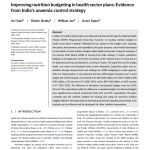
Financial Inclusion in India
13 September 2012
The need for creating equitable access to basic financial services has been widely acknowledged by several studies in recent years. A lot of the literature on the banking sector points to a close relation between the development of financial architecture and economic growth, income equality and reduction in poverty. This post, the first of a two-part blog-post on financial inclusion, talks briefly about the idea of financial inclusion, scopes the extent of financial exclusion in India and also delineates some of the first efforts of the Government of India (GOI) with regard to addressing this issue.
So what is financial inclusion? The term first featured in official GOI literature in 2005 when the RBI’s Mid Term Monetary Review paper, defined it as ‘The process of ensuring access to appropriate financial products and services needed by all sections of society in general and vulnerable groups such as weaker sections and low income groups in particular at an affordable cost, in a fair and transparent manner by mainstream institutional players.’[1]
Research contends that a financially inclusive system is highly desirable for 3 reasons.[2]First, it facilitates the efficient allocation of productive resources. Second, access to appropriate financial services can significantly improve individuals with their day-to-day management of finances thereby enabling them to stabilise their income levels. And third, an all-inclusive financial system can help reduce the growth of informal sources of credit (such as moneylenders) which often tend to be exploitative.
Khempson and Whyley[3] in their paper in 1999, identified five major forms of financial exclusion as follows:
- Access exclusion, where segments of population remain excluded from the financial system either due to remoteness or due to the process of risk management of the financial system.
- Condition exclusion, when exclusion occur due to conditions that are inappropriate for some people.
- Price exclusion, when the exclusion happens due to unaffordable prices of financial products.
- Marketing exclusion, when exclusion occurs due to targeted marketing and sales of financial products.
- Self-exclusion, that takes place when certain groups of people exclude themselves from the formal financial system owing to fear of refusal or due to psychological barriers.
Thus, whilst attempting to understand financial inclusion in the Indian context, one would do well to factor in each of these types of exclusion.
In India, the first major effort towards financial inclusion dates way back to 1969, when through an official directive, the GOI nationalized 16 banks[4], with a view to provide access to banking services to its vast rural populace. The Co-operative Bank movement, the setting up of Regional Rural Banks, Self Help Groups, and even the Lead Bank Scheme were all early initiatives geared towards enlisting the participation of excluded sections of the populations into the formal rung of financial services. And yet, even several decades since, the extent of financial exclusion in the country is staggering.
With only 33,945 bank branches in as many as 6 lakh habitations, India has a low bank branch to population ratio. World Bank data reports that with only 10.9 branches per 100,000 persons, India fares higher than other developing nations such as Bangladesh (6.9 per 100,000 persons), Iraq (4.2 per 100,000) and Pakistan (8.8 per 100,000) it fares considerably lower than countries such as Denmark (where the number stands at 41.1 branches per 100,000), Honk Kong (23.6 branches per 10,000) Japan (34.0 branches per 100,000) and even South Korea (18.6 branches per 100,000)[5]. RBI data[6] reveals that only 55 percent of the Indian population has deposit accounts (with nothing being said with regard to what extent all of these are actually operational), and only under 9 percent of the population own credit accounts. Less than 20% of individuals own any kind of life insurance and less than 9% own any other type of insurance.
It is therefore clear that despite the introduction of multiple interventions spanning several decades, efforts towards achieving financial inclusion in India have seen only limited success, with sizeable numbers of the country’s population still being left out of formal financial institutions. In my next post I shall talk about some of the more recent initiatives by GOI that have a more concerted focus on creating financial inclusion, the amount of money being spent on them, the reasons and extent for their successes and failure, and most importantly, some policy interventions that could be implemented to fast-track this process.
[1] Speech on Financial Inclusion by Dr. K.C. Chakrabarty, Deputy Governor, Reserve Bank of India, September 2011, http://rbidocs.rbi.org.in/rdocs/Speeches/PDFs/FIC060911DG.pdf
[2] Discussion paper on the “Index of Financial Inclusion”, M Sarma, 2010, http://202.41.10.25/Academics/Schools/SchoolOfInternationalStudies/CITD/DiscussionPapers/DP05_2010.pdf
[3] Kept Out or Opted Out, understanding and combating financial exclusion, Kempson and Whyley, 1999, http://www.pfrc.bris.ac.uk/Reports/Kept_out_opted_out.pdf
[4] The Reserve Bank of India, 1967-1981, chapter 1, “The Defining Event”
http://rbidocs.rbi.org.in/rdocs/content/PDFs/90069.pdf
[5] World Bank Data, Commercial Bank Branches per 100,000 adults, http://data.worldbank.org/indicator/FB.CBK.BRCH.P5
[6] The Reserve Bank of India, http://www.rbi.org.in/scripts/PublicationsView.aspx?id=13517





